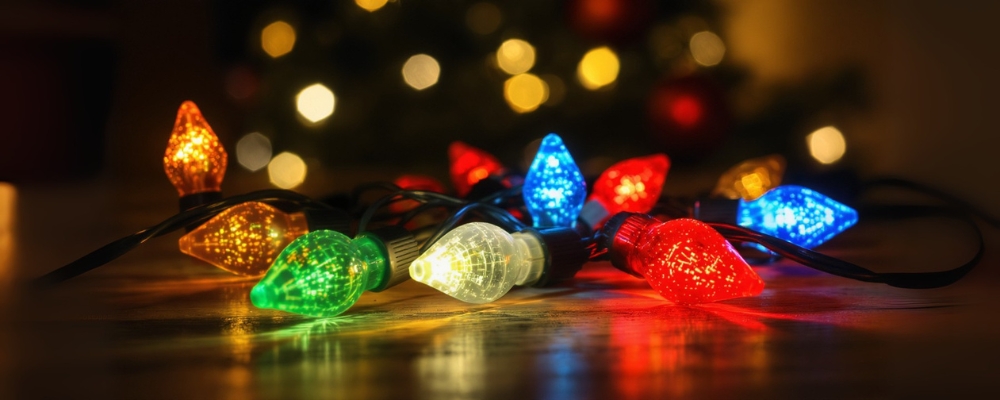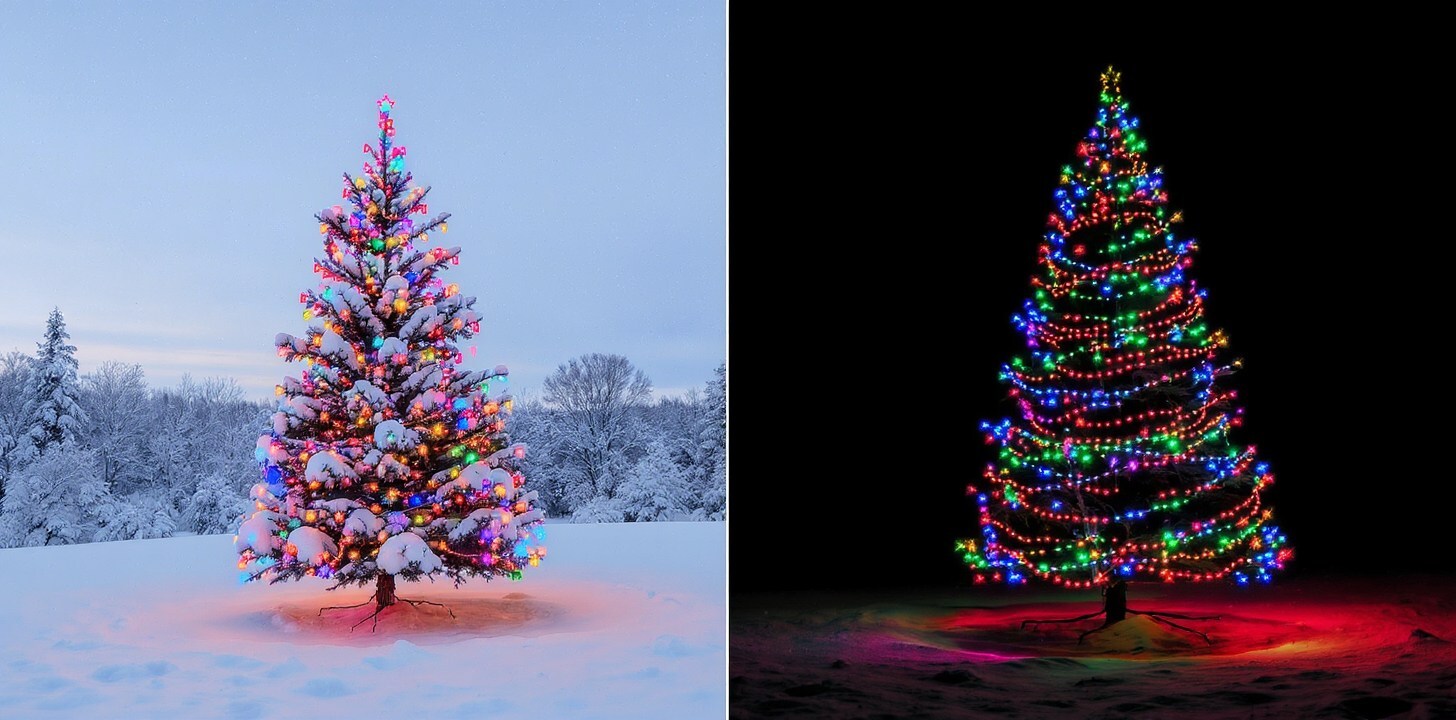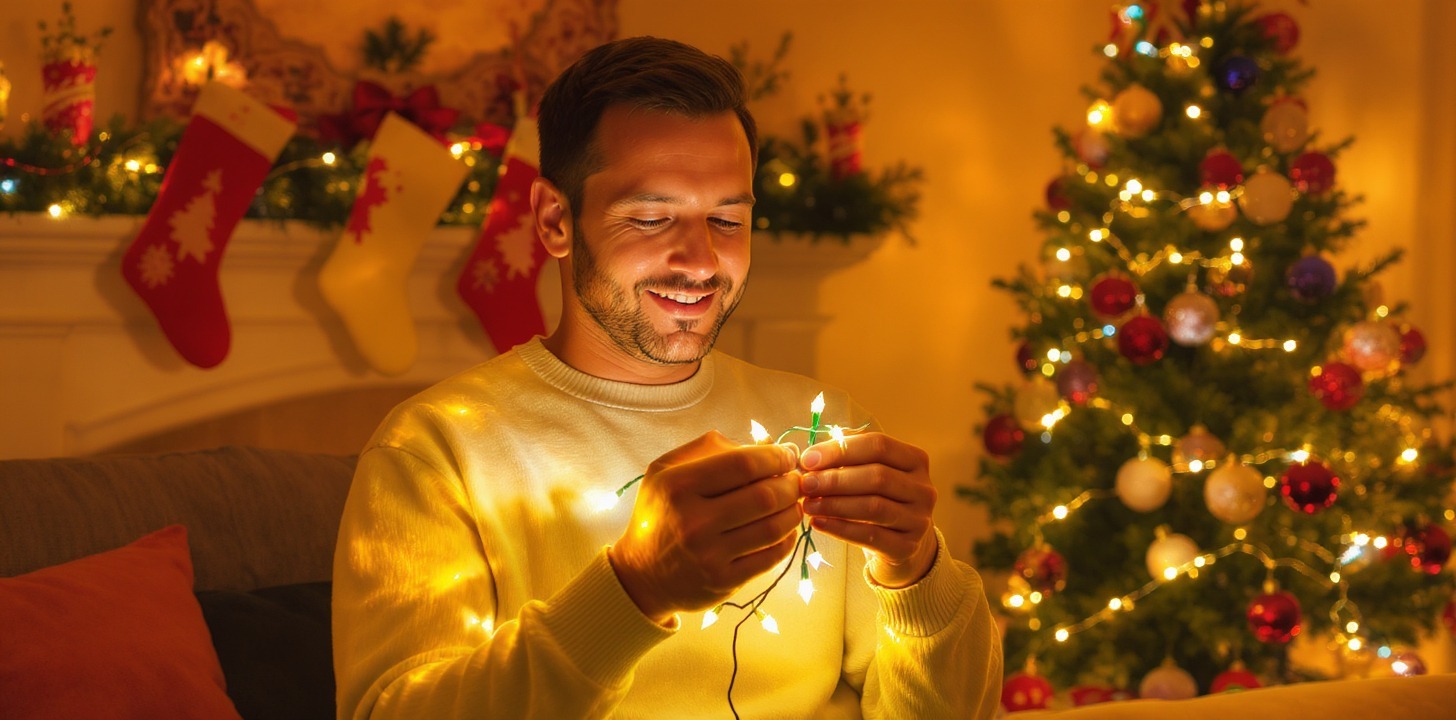Enjoy FREE SHIPPING on orders over $100 | Call us with any questions (800) 865-7221 Request a Call

When the holiday season rolls around, you're flooded with options for decorating — glittering LED strands, solar-powered projectors, and smart color-changing bulbs. But for many, there's something deeply nostalgic about incandescent Christmas lights. Maybe it's the soft glow, the familiar warmth, or just memories of untangling old strands with family.
In this blog, we'll explore why incandescent lights remain beloved, compare them to LED Christmas lights, and help you navigate Christmas lights coloring to make your holiday display feel magical.
There’s something undeniably classic about incandescent lights. These bulbs rely on a heated filament to produce light, giving off a golden warmth and soft flicker that LEDs can’t quite replicate. For some, this warmth reads as more festive, more comforting.
Many older-style decorations and vintage displays are designed around incandescent lighting, making them easier to pair. And if you’re chasing an authentic retro vibe—think carolers, nostalgic ornaments, and frosty windows—incandescents deliver.
It’s worth understanding how incandescent lights compare to LED options:
Warm glow vs cool shine: Incandescents have a soft amber hue, while LEDs often appear very white or saturated depending on their color.
Energy use and lifespan: Incandescent bulbs burn more electricity and last only about 1,000 hours versus 20,000+ for LEDs.
Heat output: Incandescents produce more heat—something to consider if you have delicate greenery or live in a warmer climate.
Maintenance: LEDs are more durable and less prone to breakage, although some people find dealing with blown incandescent bulbs and replacement fun—and nostalgic!
If you're deciding between incandescent vs LED Christmas lights, think about what matters most: true vintage feel or energy savings and performance.

Choosing your color palette sets the tone for your holiday display. The options are more abundant than ever:
When using LED lights, you get sharper color differentiation, but incandescent hues tend to feel more muted and inviting. They’re especially good for warm themes or traditional home décor.
Tip: Test a small strand with ornaments or wreaths you’ll pair it with. Incandescent reds and greens slightly differ from their LED counterparts—seeing them together helps you choose palettes that blend well.
Incandescent bulbs cast a soft glow along rooftops and gables, lending a cozy border without harsh glare.
Soft incandescent light brings out the green’s richness without overshadowing your wreath or greenery.
Strategic placement inside windows ensures your neighborhood neighbors see that warm glow without electric wires crossing your lawn.
String incandescent micro-lights through tabletop garlands or mason jar candles for understated festive flair.
If you’re aiming for “vintage Christmas,” combining incandescent lights with antiques, vinyl records, or retro signage gives everything a cohesive December feel.
There are still plenty of places where LED Christmas lights edge out incandescents:
But that doesn’t mean you can’t mix or match: incandescent strings work beautifully alongside LED accents, particularly where you want warm highlights and energy-efficient coverage in other areas.
Even though they’re older technology, you can still enjoy incandescent sets for years with proper care:
When properly maintained, even an older strand of incandescent bulbs keeps giving holiday cheer.

Want traditional charm with modern convenience? Try mixing incandescent with LED in your holiday setup:
This way, you get warm regular points of focal glow while LEDs handle big format coverage. The result feels intentional—not wasteful or mismatched.
At the end of the day, incandescent Christmas lights are as much about feeling as function. They echo decades of holiday traditions, bring genuine warmth to your décor, and cast an inviting glow in a way LEDs sometimes lack.
Of course, modern LED lights have changed the playing field—they’re efficient, vibrant, and long-lasting. But for many homes, especially those aiming for a classic aesthetic, incandescent colors still matter. With proper care, they remain festive favorites that don’t feel dated.
At AQ Lighting, we offer a curated range of holiday lighting solutions—both incandescent and LED—to help you get the look and feel you want. From guiding your style choices to pairing lights with timers or smart plugs, we’re here to help make your holiday display shine safely and beautifully.
Incandescent lights offer a warm, nostalgic glow with rich, traditional colors. In contrast, LED lights are far more energy-efficient, last up to 50,000 hours (versus 1,000–2,000 hours for incandescents), and stay cool to the touch—making them safer and more cost-effective over time.
Incandescent Christmas lights remain favored for their classic warmth, even color fading over time, and easy replaceable bulbs. They shine in vintage-themed displays and remain affordable upfront, albeit with higher energy use and shorter lifespan.
Yes. Christmas lights coloring differs: incandescents deliver softer, jewel-toned hues and vintage warmth, while many LEDs provide brighter, sharper, and more vibrant tones—sometimes cooler in feel.
Yes, If they’re rated for outdoor use and handled correctly. They produce noticeable heat, so it’s crucial to keep them away from dry greenery and disconnect during unattended hours. Use surge protectors and check that all bulbs and wiring are in good condition.
Initially, yes—incandescent strands are cheaper per string. But over time, LEDs save more through energy efficiency, longer life, and lower replacement needs. Many studies show long-term cost savings with LED lights despite a higher upfront price